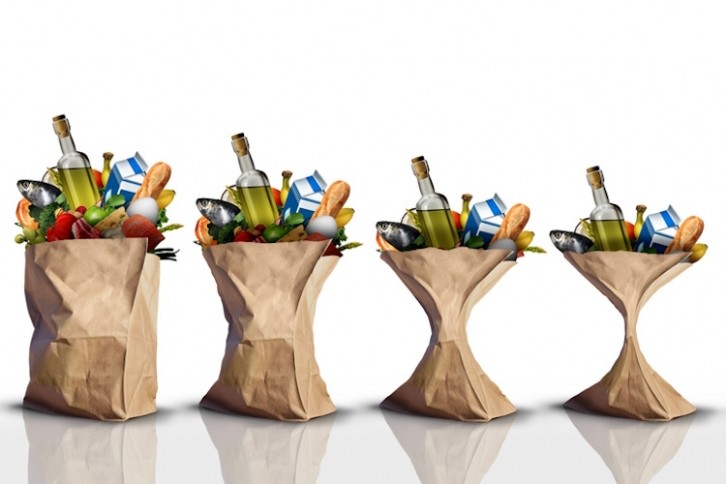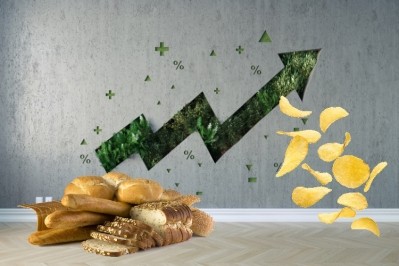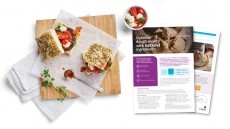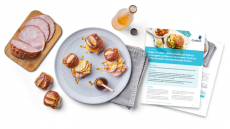5 popular UK products hit hard by shrinkflation

Shrinkflation is the practice of reducing the size or quantity of a product while maintaining the same price, or even increasing it, thereby effectively raising the cost per unit without an outright price hike. It’s a practice employed by companies to manage rising costs without the consumer initially noticing.
Global shrinkflation trends
Shrinkflation is a worldwide phenomenon.
It has been observed extensively in the US with brands shrinking products like cereals, toilet paper, and snacks.
In the UK, its particularly noticeable with items like crisps, chocolate and beverages. According to the Office for National Statistics (ONS), between 2015 and 2020, about 206 products shrank in size, but the price remained the same or increased. Well-known brands like Walkers, McVities, Hovis and Toblerone, among a raft of others, have all reduced product sizes in recent years.
Shrinkflation became even more widespread in the UK post-Brexit due to increased costs of importing goods and labor shortages. The effects of the pandemic and the Ukraine conflict – which caused spikes in energy and grain prices – have also intensified the practice.
The effects on consumer trust and perceived value, however, are significant, especially in markets like bakery and snacks. Research by Compare the Market found digestive biscuits have been hit the hardest by shrinkflation, followed by breakfast cereals, butter and potato crisps.
To find out which items have been hit the hardest by both inflation and shrinkflation over the past decade, Compare the Market recorded the prices of 28 common grocery items found in a well-known UK supermarket in May, comparing them to 2014.
Ranking | Item | Unit price in 2024 | Unit price in 2014 | Price increase | Size difference |
1 | Digestive biscuits | £0.50 | £0.22 | 129% | -28% |
6 | Choco Pops | £0.79 | £0.49 | 61% | -24% |
8 | Butter | £1.08 | £0.68 | 58% | -20% |
12 | Crisps (6pk) | £1.50 | £1.04 | 44% | -17% |
18 | Corn Flakes | £0.49 | £0.36 | 35% | -10% |
23 | Chocolate bar | £1.11 | £1.00 | 11% | -10% |
Digestive biscuits
A British tea-time staple, digestive biscuits have shrunk by as much as 28% in size since 2014.
According to Compare the Market, the unit cost of digestive biscuits (ie the cost per 100g) has increased by 129% since 2014, marking the greatest increase of all items on the list. The actual price increase per item for digestive biscuits is 71p, however, they have also decreased in size by 28% over the past decade – with packs that used to weigh 400g now closer to 300g – meaning Brits are now paying 71p more but getting 28% less for their money.
The combination of inflationary pressures on ingredients like wheat and sugar, along with higher packaging and transportation costs, has driven many manufacturers to shrink the size of biscuit packages to keep prices competitive.
For biscuit manufacturers, shrinkflation may be a way to manage rising costs, but at the risk of losing consumer loyalty, many of whom have switched to private label products offering better value.
Cereal brands feeling the squeeze
Household brands like Choco Pops and Corn Flakes have seen reductions in package sizes of up to 24% and 10%, respectively.
Despite the diminishing box size, Choco Pops has seen a 61% increase in unit cost, according to Compare the Market. This has raised concerns among consumers, who feel misled by packaging that appears unchanged but contains less product. Similarly, Corn Flakes has seen a reduction in size with a concurrent rise in price.
This practice allows cereal producers to absorb rising costs for grains, sweeteners and packaging materials without significantly altering the retail price. Consumers may not immediately notice the difference, but they’ll quickly feel the pinch when they realize they need to buy more frequently to keep their pantries stocked.
The impact on bakery businesses
Dairy products have been particularly vulnerable to shrinkflation due to fluctuating costs of milk and dairy farming, energy prices and packaging. The price of a block of butter has gone up by 45p since 2014, while it size has shrunk by 20%. This the consumer is paying 58% more per unit of butter.
This has had a significant impact on the bakery industry, with bakers having to either absorb the rising costs or pass them on to consumers. Retailers are also affected, as they must navigate the challenge of offering competitive pricing on essential items like butter while dealing with the higher per-unit costs brought on by shrinkflation.
A shrinking snack triggers growing frustration
Snacks have not been inured to shrinkflation. Some potato crisp brands have reduced the contents of multipacks by up to 17%, while the price has either remained stable or increased, meaning shoppers are paying more per gram than they were just a few years ago, according to Compare the Market data.
The rising costs of potatoes, vegetable oils and packaging materials have contributed to the shrinkflation in this sector. However, as a popular snack, this has led to consumer backlash. Social media platforms are often flooded with complaints, as customers feel they are being short-changed.
Shrinkflation hits household staples
Bread, a fundamental staple in households worldwide, has not escaped the effects of shrinkflation. While the size of loaves of bread has shrunk by about 10% in some cases, the price of bread has increased by as much as 39%, say Compare the Market. Burger buns have seen a per unit price surge of 108%. This is down to a combination of a 25p increase in item price and a 33% decrease in item size, meaning Brits are paying 25p more for a product that’s a third smaller than it was in 2014.
Bakery products, in general, are particularly vulnerable to the high costs of key ingredients like flour, yeast and eggs. The runaway costs of energy, particularly in keeping ovens hot, production running and transportation, have also made it difficult for manufacturers to keep prices stable.
Skewing consumer perception and loyalty
Shrinkflation is reshaping the way consumers interact with their favorite products. While manufacturers and retailers use this tactic to mitigate rising production costs, it has resulted in decreased consumer trust and brand loyalty.
As the cost of living continues to rise and inflationary pressures persist, shrinkflation may become an increasingly common tool for companies. However, the long term implications for consumer behavior and brand perception cannot be ignored.
Transparency and communication will be key for businesses looking to navigate this landscape without alienating their customers.

























